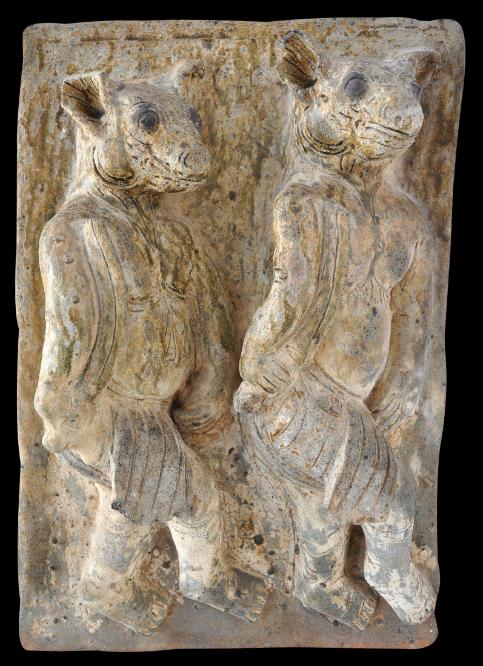
Pegu Burmese Tile
Large Terracotta Glazed Tile Depicting Two of Mara’s Warriors
Shwegugyi Pagoda, Pegu, Burma
circa 1472
height: 46cm, width: 31cm
This large, terracotta tile glazed in green and brown shows two bear-headed warriors from the monstrous army of king Mara who attempted to disturb the Buddha from his Meditation. It formed part of a famous series of tiles or plaques placed in niches around the enclosure wall of Shwegugyi Pagoda, just south of Pegu (Bago). This Pagoda was built by Dhammaceti in imitation of the Bodhgaya Temple in India (Aung Thaw, 1972). It is the largest and most important pagoda in the area. Some of the tiles in the series are dated with a date that accords with 1472 AD, hence the ability to date the tile here to circa 1472. Fraser-Lu (1994, p. 203) says that ‘over 200’ such plaques or tiles were made. Stadtner (2011) estimates that the number made was between 200 and 300 but that ‘no more than 100 are traceable today’ of which around fifty are in public collections. This suggests that surviving examples are relatively rare. The tiles are particularly noted for their unusually large size.
Each tile in the series showed a pair of warriors from Mara’s army. Each tile is unique and distinguished from the others by the heads of animals surmounting the human bodies of the warriors and by the weapons held in their hands.
The tiles were cut from clay slabs. The figures in high relief were then boldly moulded and luted on. The plaques then would have been dried, slipped, glazed with both lead and ash glazes, and then fired.
Tiles from this series are known in public and private collections. The British Museum has an example currently displayed. An example also is in the Osothspha Ceramic Collection in Thailand – this example is illustrated in Falconer (1998, p. 163.) The Los Angeles County Museum of Art has an example with a very similar glaze – colour and condition – as the example here. Two other tiles were sold as Lot 39 at Sotheby’s New York ‘Indian & Southeast Asian Works of Art’ sale of March 24, 2011.The Victoria & Albert Museum has one tile from the Ajapala Pagoda (illustrated in Lowry, 1974) but this example is quite damaged.
Like most extant examples of this series of tiles, the example has losses to the extremities which reflect its fifteenth century dating – the ears of the figures are chipped and the tops of the swords that each figure carries are deficient. (The British Museum tile has similar losses to the attributes carried by its figures.) There is also age-related salting to the glaze, particularly in the lower section where the tile would have stood on the earth and probably leaning against a wall. The tile is free of any cracks, chips to its outer rim or any repairs. Overall, it is an extraordinary and rare item. It is unique, because, as mentioned, each tile for the Shwegugyi Pagoda was made with particular, identifying characteristics, and rarely is it possible to be so precise in the dating of such an item.
References
Aung Thaw, Historical Sites in Burma, Ministry of Union Culture/Government of the Union of Burma, 1972.
Falconer, J.
et al, Myanmar Style: Art, Architecture and Design of Burma, Thames & Hudson, 1998.
Fraser-Lu, S.,
Burmese Crafts: Past and Present, Oxford University Press, 1994.
Lowry, J.,
Burmese Art, Victoria and Albert Museum, 1974.
Stadtner, D., ‘King Dhammaceti’s Pegu’ in
Orientations, 21.2: 53-60. 1990.
Stadtner, D., ‘A fifteenth-century royal monument in Burma and the Seven Stations in Buddhist art,’ in
The Art Bulletin, 73.1: 39-52. 1991.
Stadtner, D.,
Sacred Sites of Burma: Myth and Folklore in an Evolving Spiritual Realm, River Books, 2011.
Provenance
UK art market
Inventory no.: 1781
SOLD

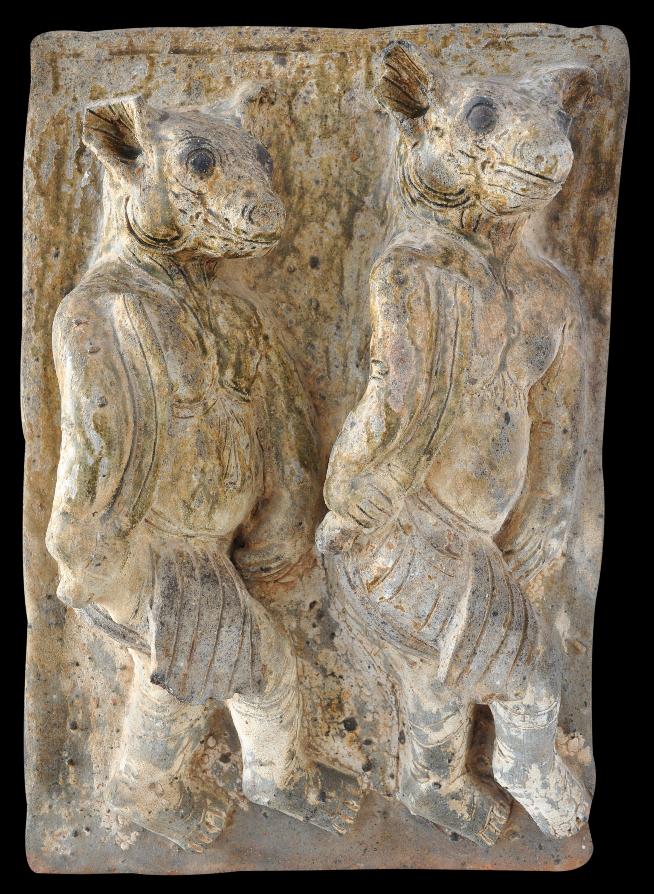
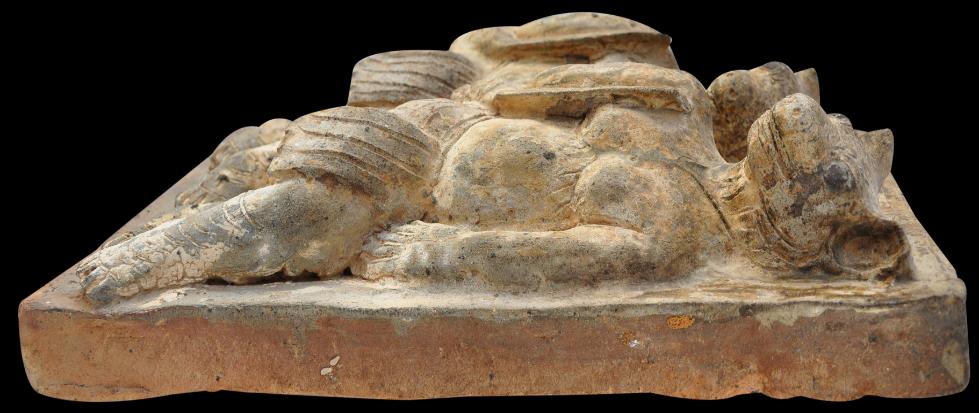
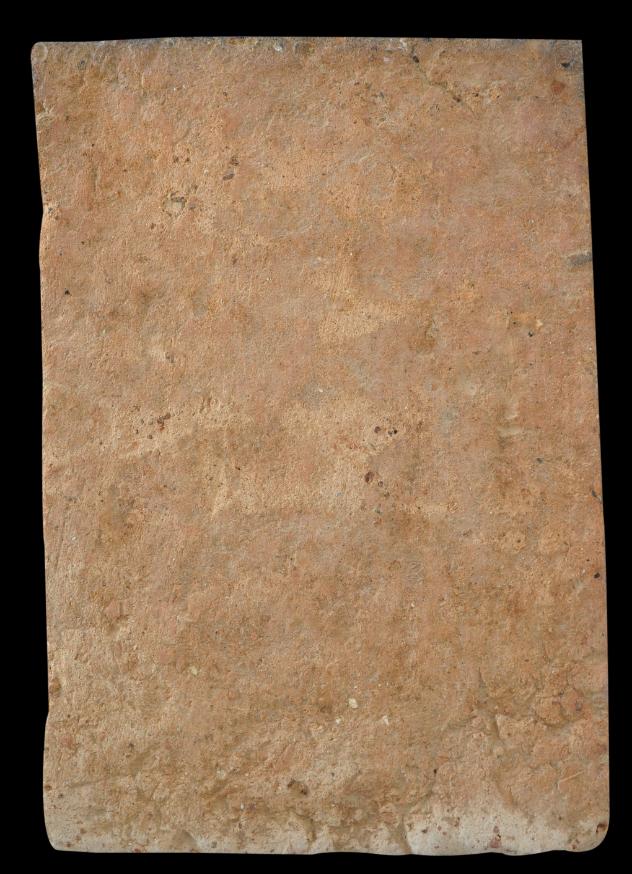
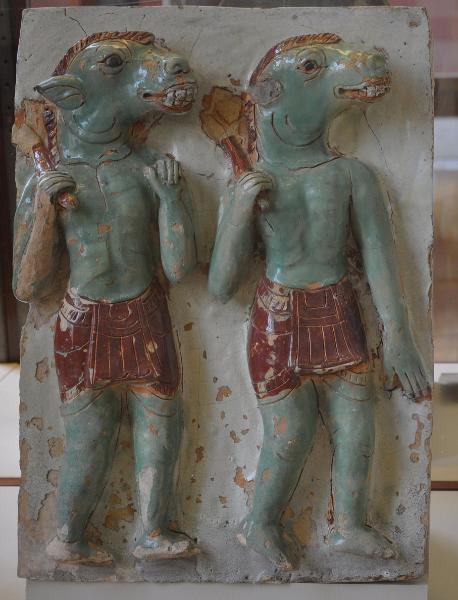
The British Museum example, currently on display.

